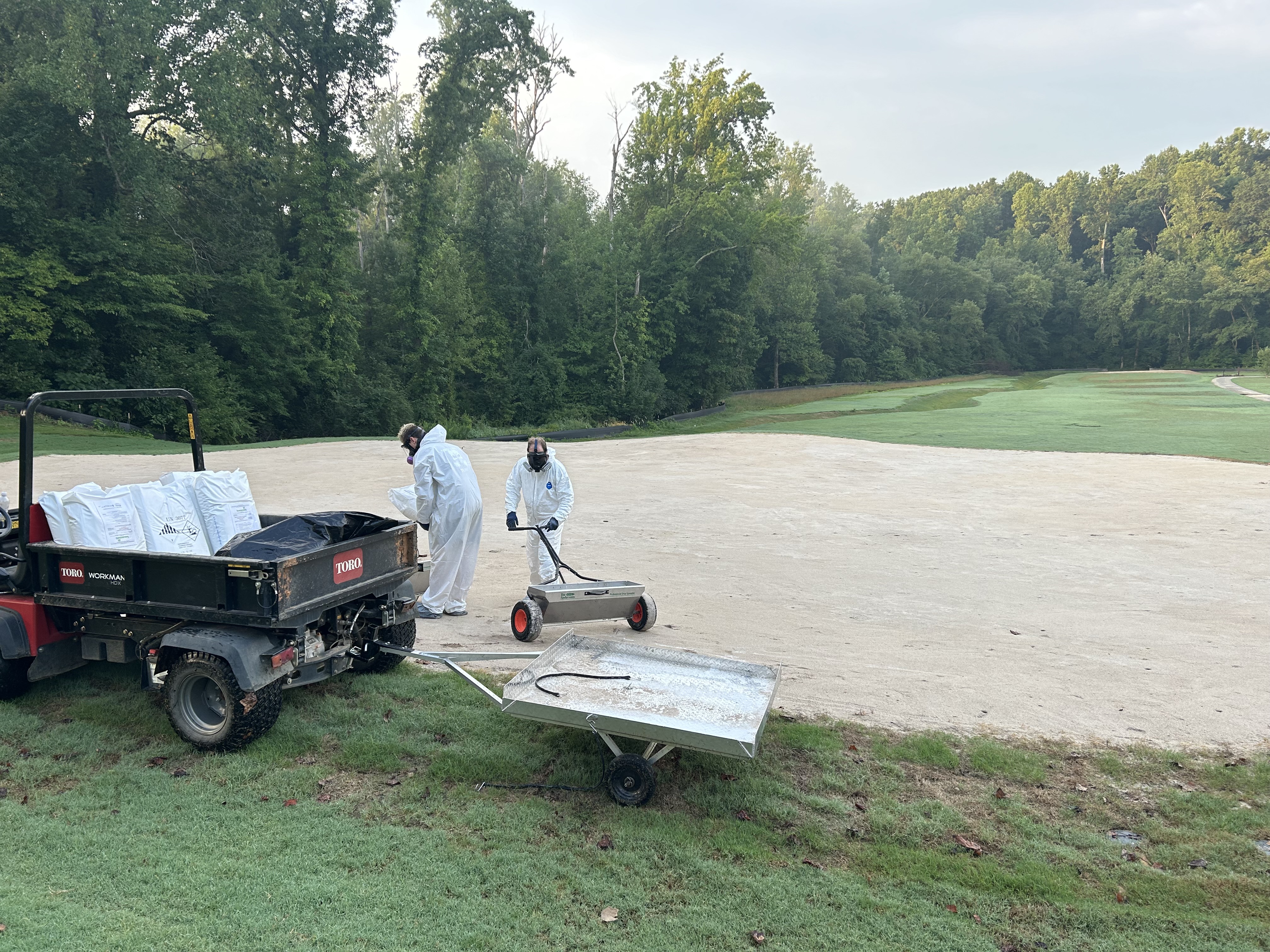The Hidden World Beneath Your Turf
When you look at a pristine golf course or athletic field, what you see is the result of careful planning and execution that starts long before the first blade of grass is planted. The foundation of healthy turf lies in the soil beneath it, and understanding the science of soil fumigation is crucial to creating playing surfaces that perform at the highest level.
What Lives in Untreated Soil?
Soil is a complex ecosystem teeming with microscopic life. While many organisms are beneficial to plant health, others can devastate turf before it even has a chance to establish:
- Plant-Parasitic Nematodes: Microscopic worms that feed on grass roots, causing stunted growth and patchy appearance
- Fungal Pathogens: Disease-causing fungi that can remain dormant in soil for years, waiting to attack new plantings
- Bacterial Diseases: Harmful bacteria that interfere with nutrient uptake and root development
- Weed Seeds: Dormant seeds that can germinate and compete with turf grass for resources
- Insect Larvae: Grubs and other larvae that feed on roots and organic matter
How Fumigation Works
Soil fumigation is a pre-plant treatment that uses specialized compounds to eliminate harmful organisms while preparing the soil for optimal turf establishment. The process involves several key steps:
1. Soil Preparation
Before fumigation, soil must be properly prepared. This includes tilling to the appropriate depth, adjusting moisture content, and ensuring proper temperature. These factors are critical because they affect how the fumigant moves through the soil profile.
2. Fumigant Application
Modern fumigants are applied using precision equipment that ensures even distribution throughout the treatment area. The fumigant transforms into a gas that permeates soil pores, reaching organisms that traditional treatments cannot touch.
3. Soil Sealing
After application, the soil is sealed using tarps or water to prevent the fumigant from escaping prematurely. This containment is crucial for maintaining effective concentrations throughout the treatment period.
4. Aeration Period
Following the treatment period, the soil must be properly aerated before planting. This allows any remaining fumigant to dissipate while the soil begins to repopulate with beneficial organisms.
The Chemistry of Modern Fumigants
Today's fumigants are specifically designed to maximize effectiveness while minimizing environmental impact. Common fumigant types include:
- Methyl Bromide Alternatives: Following the phase-out of methyl bromide, newer compounds like methyl iodide and chloropicrin provide effective broad-spectrum control
- 1,3-Dichloropropene: Particularly effective against nematodes while allowing faster replanting times
- Metam Sodium: A versatile option that breaks down into multiple active compounds
Biological Response and Recovery
One of the most fascinating aspects of fumigation is observing how soil ecology responds. While fumigation reduces overall microbial populations, beneficial organisms typically recover faster than harmful ones when conditions are properly managed.
Research shows that fumigated soils, when combined with proper fertility management, often support healthier microbial communities than untreated soils plagued with pathogens. This creates what agronomists call "biological reset" – a clean slate for establishing optimal soil health.
Measuring Success
Professional fumigation services employ several methods to verify treatment effectiveness:
- Nematode Assays: Pre- and post-treatment soil sampling to measure nematode populations
- Bioassays: Testing soil samples with sensitive plant species to detect remaining pathogens
- Gas Monitoring: Measuring fumigant concentrations during treatment to ensure adequate exposure
- Turf Performance: Long-term monitoring of grass establishment and health
Environmental Considerations
Modern fumigation practices prioritize environmental stewardship through:
- Buffer zones around sensitive areas
- Advanced application technologies that reduce emissions
- Soil sealing techniques that prevent atmospheric release
- Careful timing to minimize off-target impacts
- Integration with other pest management strategies
The Results Speak for Themselves
When soil fumigation is executed by trained professionals using proper protocols, the results are dramatic. Turf establishes faster, grows more uniformly, and shows greater resistance to stress. Golf courses report improved playing conditions, athletic fields demonstrate better durability, and landscape installations exhibit superior aesthetics.
The science behind soil fumigation represents decades of research into soil biology, chemistry, and physics. By understanding and applying these principles, we can create the foundation for turf that not only looks beautiful but performs exceptionally for years to come.
Partner with the Experts
At Smoking Turf, our certified technicians combine scientific expertise with practical experience to deliver fumigation services that prepare your soil for success. We use EPA-approved materials and proven methodologies to ensure your project starts with the healthiest possible foundation.
Contact Us for a Consultation